Boxing day Premier League football is back as Southampton faced Brighton on the south coast. After an unsuccessful start to the season, Ralph Hasenhüttl left the team as Nathan Jones who built a reputation in his Luton Town experience replaced him, but in this game, he faced many struggles. This tactical analysis will explain how Jones modified his tactics during the game against Roberto De Zerbi’s skilful side.
Lineups
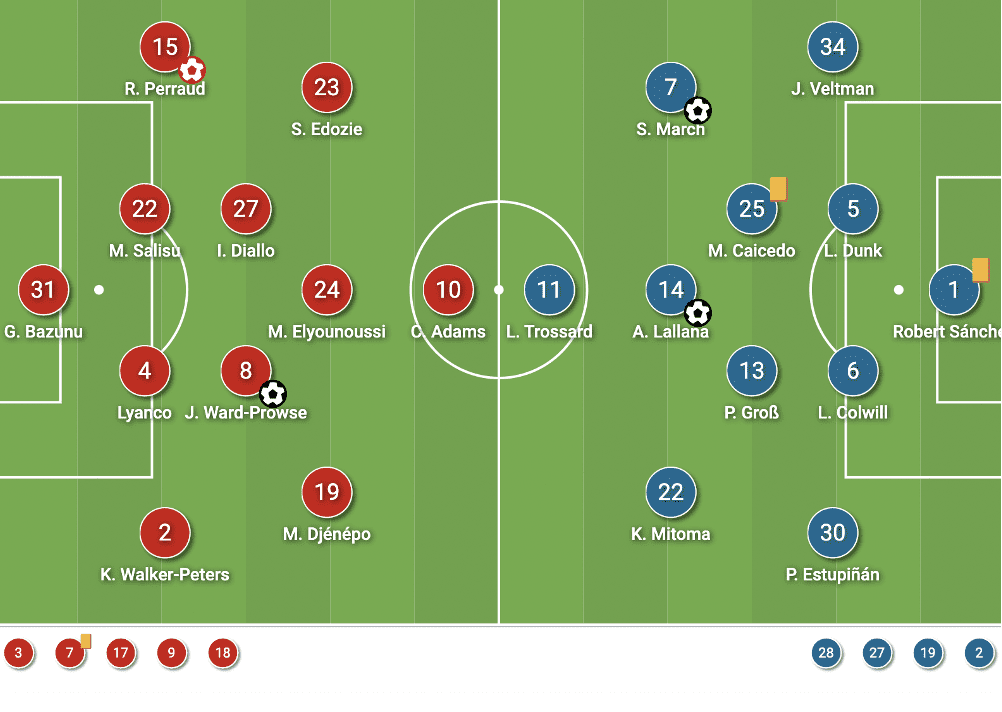
Southampton started with a 4-2-3-1 on paper but the shape can vary with and without the ball. They have German international Armel Bella-Kotchap on the bench as Mohammed Salisu partnered Lyanco in the defence.
Brighton had so many injuries around and they were missing the likes of former Manchester United striker Danny Welbeck and also Alexis Mac Allister who won the FIFA World Cup with Argentina. They also played in a 4-2-3-1 but were so different to the opponent when they had the ball in the construction phases.
Brighton good start
At the start of the game, Brighton were dominating the opponents with clear playing principles, more possession, and passes to move the ball in a good way.
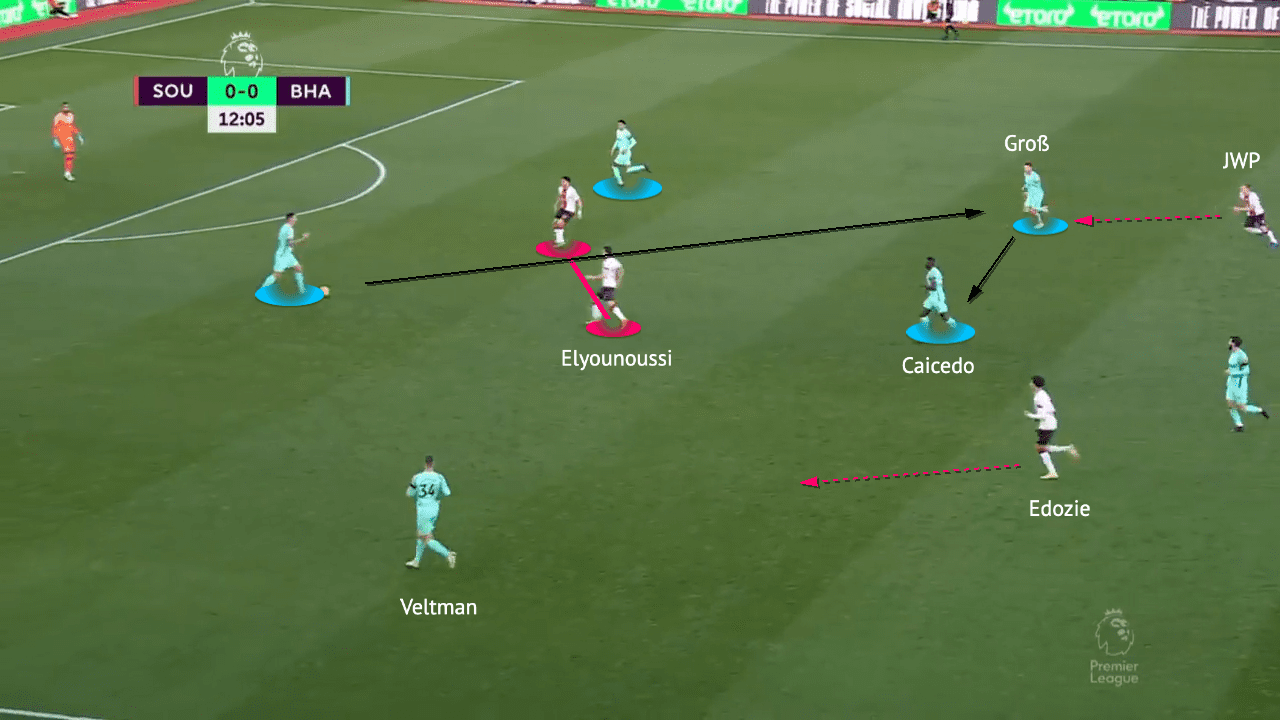
In the build-up, De Zerbi always wants to attract the opposition to jump, then hit them with forward passes when the rival got overcommitted and lost their compactness. Southampton’s press was not organised and detailed enough in the start and those scenarios kept happening, they were just chasing Brighton as the Seagulls were able to move the ball very easily.
When the Saints tried to put more pressure on the ball holder, the timing and angle of push were not precise enough. The above image shows Mohamed Elyounoussi pressing the central defender when Che Adams closed the other centre-backs, it sounds reasonable but they were too naïve to let Brighton have an uncontrolled six in the centre. As Southampton were only supporting the first line with James Ward-Prowse, very easily Pascal Groß used Moses Caicedo as a leeway to escape after he received the diagonal pass from Lewis Dunk.
It was also a positional superiority created by Brighton as they dropped the full-back when the central defender had the ball, so the Southampton left-winger, Samuel Edozie was more aware of the outside than the inside, so he could not close Caicedo in the centre.
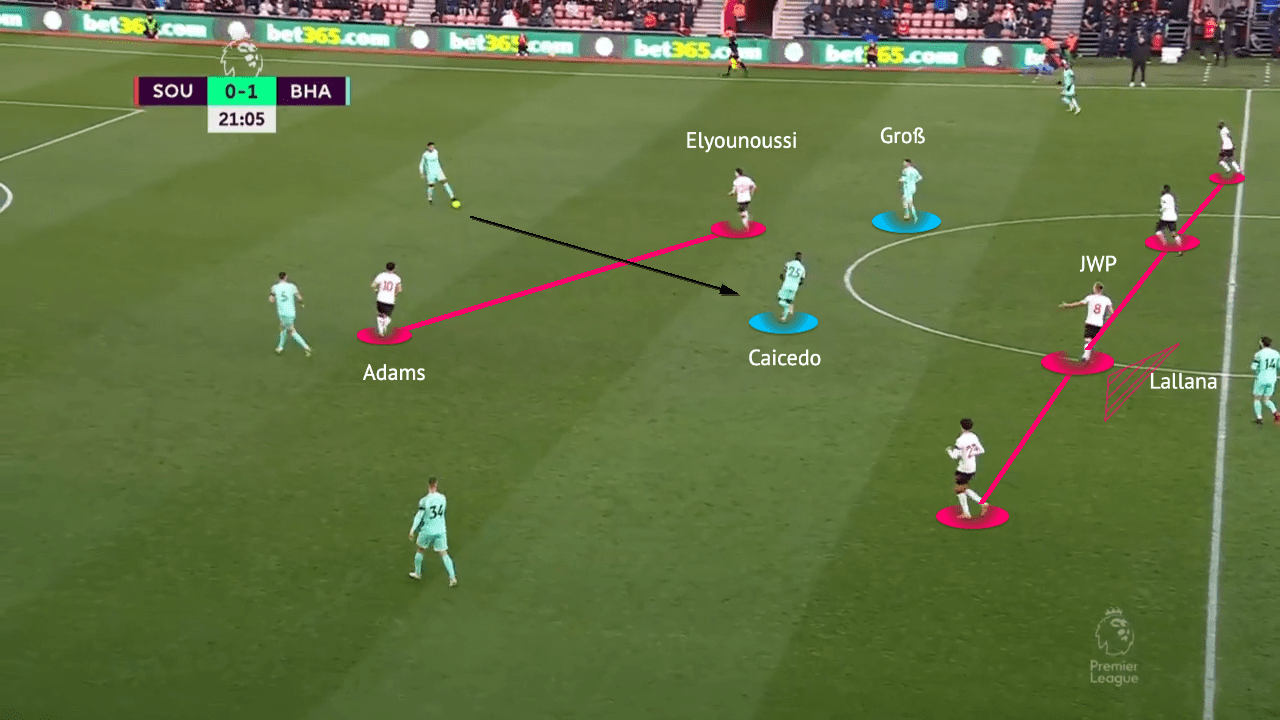
In the centre, Southampton wanted to play with players between each line, the image shows Groß and Caicedo were between the forward line and the midfield line, but they also had Adam Lallana or temporary players manipulating the second line, so they always kept the opposition busy and having staggered positional heights of support in possession.
This time, the Southampton first line was stretched by central defenders, so Levi Colwill just sliced the pass between Elyounoussi and Adams to connect Caicedo. Southampton could not respond as Ward-Prowse was more aware of Lallana, who was behind him, and therefore he did not jump. That allowed Brighton to break the line into the next phase of play.
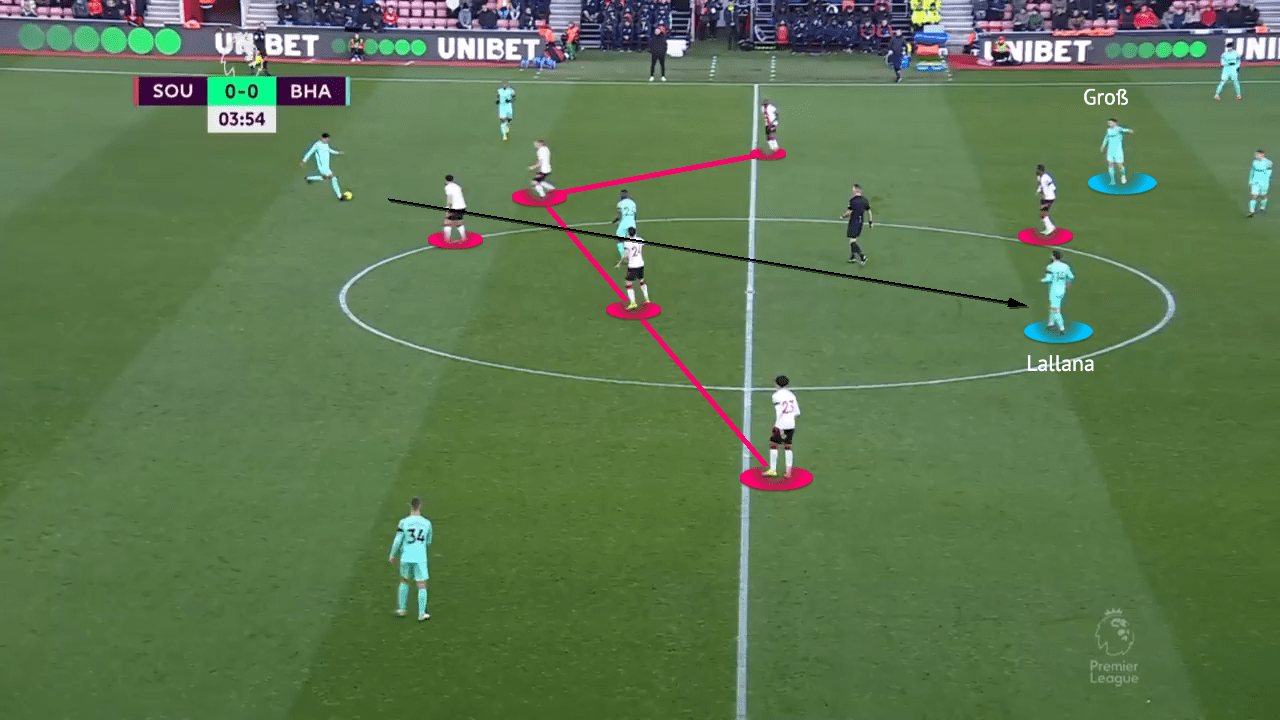
But in the start, Brighton were more different as Southampton stayed in a 4-1-4-1 without possession, De Zerbi tried to put two players around the isolated Saints six, passes should go to either one of them who will be free as a 2v1 was always there, as shown above. They don’t play with a lot of verticality, but more diagonality in the passing routes in this game particular, because Southampton’s players were just running straight to their opponent at the start of the game.
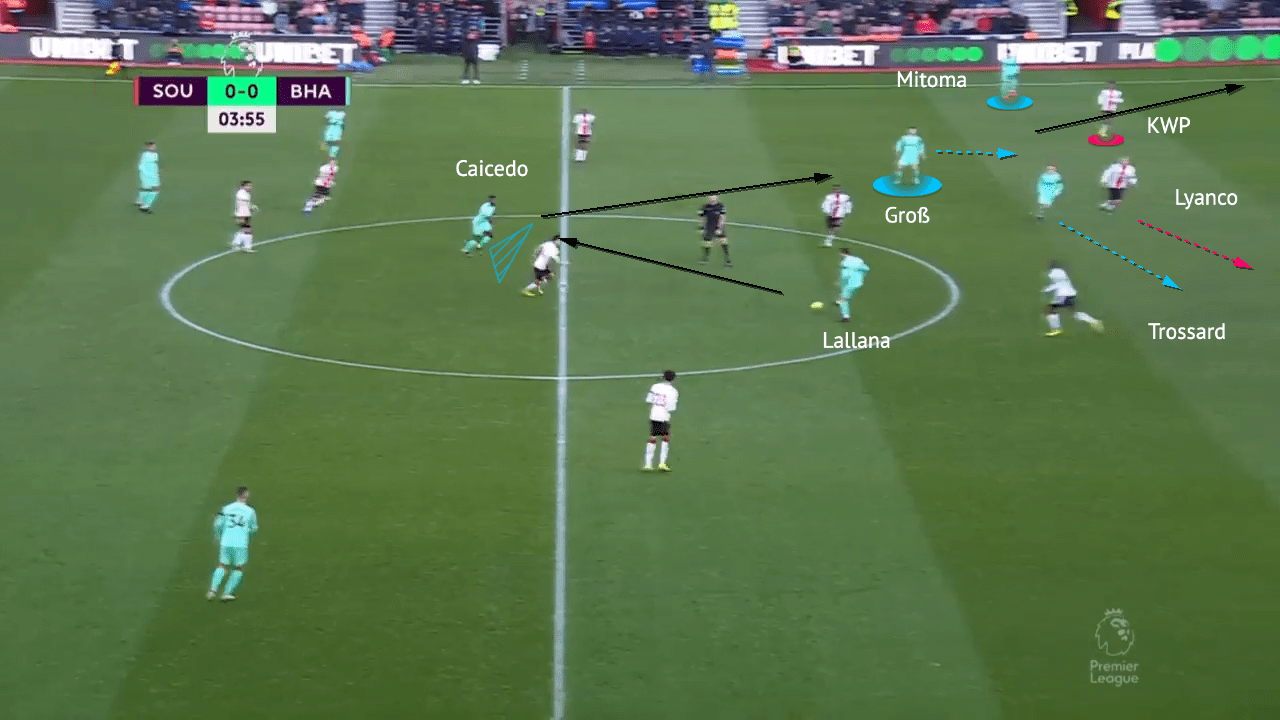
Then, when Lallana received between lines and invited the central defender to jump, see how quickly Caicedo adjusted his body angle to present himself as the third man, so Brighton just escaped from Salisu’s jump with a third-man play, all the way to Groß who was free to receive now. Also, Brighton could have Leandro Trossard pinning and engaging the right centre-back, Lyanco of Southampton, so they could create favourable conditions on the opposition right-back.
Here, as soon as Groß received, Trossard’s run behind moved Lyanco to the centre and opened a 2v1 in front of Kyle Walker-Peters, so they could quickly distribute the ball to the wide man who has more quality and sense to drive the ball after breaking lines centrally. Kaoru Mitoma would be able to create threats with his dribbling with the conditions De Zerbi created in the team structure.
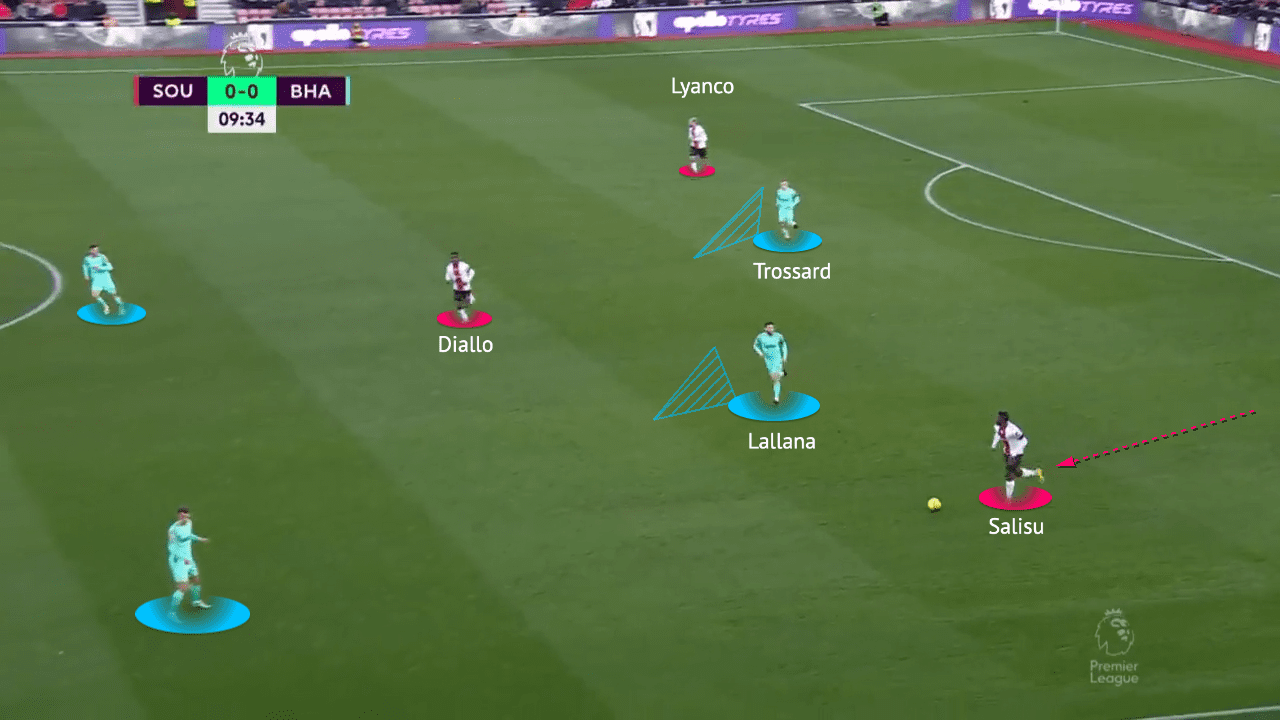
When Southampton with the ball, they had great difficulties in reaching the opposition third as they were too direct but without clear development. Defensively, Brighton felt comfortable in controlling the opponent without the urgency to win the ball from the centre-back, but they tried to stay more from the centre to prevent Southampton from attacking via the right side, where Walker-Peters would create wide threats with the winger.
Now, as shown in the body angles with Trossard and Lallana’s defensive positions, they invited Southampton to the left side, as they could afford to let Salisu have the ball as the defender would just kick the ball forward as a result of no close connection in Southampton’s passing game. And for whatever reason, the Saints had a hard time controlling the first ball or winning the second ball battles, so they just handed Brighton the game at the start.
Southampton responded
Brighton’s superior tactics helped them to obtain a 2-0 lead in the 35th minute. Jones knew that there were issues on his side and Southampton adjusted a bit to try to control the opponent defensively.
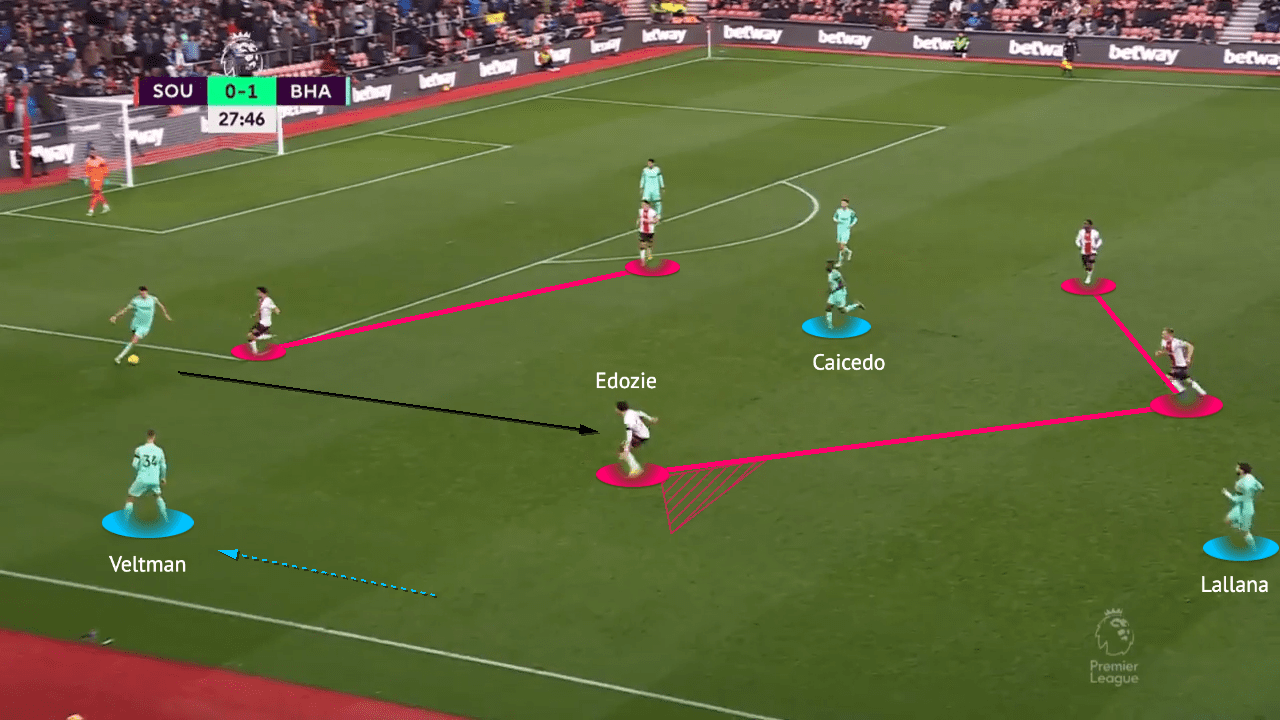
As early as it was around the 25th minute, Southampton’s left-winger was more aware of defending the inside channel. With this in his mind, Edozie was not too interested in Joël Veltman until the former Ajax defender received the ball. The above example shows Edozie stopping a bit and staying in the centre as long as Dunk has the ball, so he was more able to intercept if the passes went vertically inside and Brighton would be invited to the outside more.
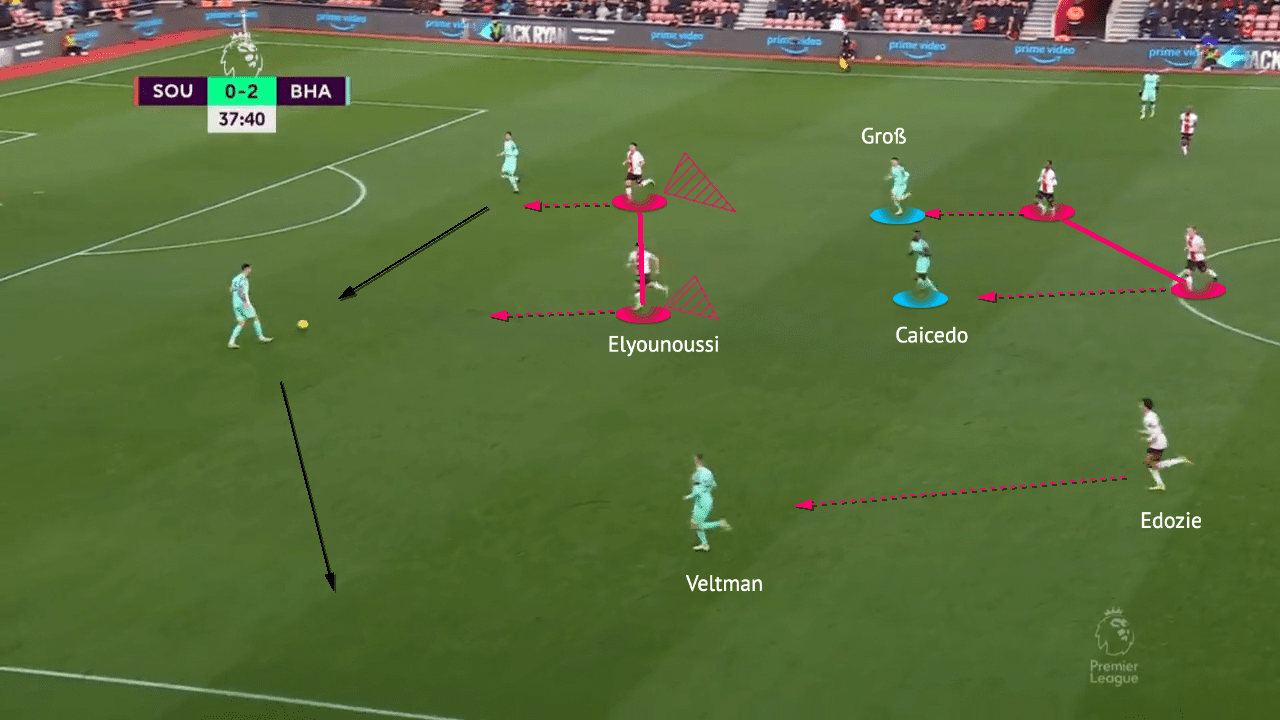
Also, the pressing angle of Southampton was more diagonal as a response to the high tendency of Brighton’s diagonal passes in the construction part of the game.
This image shows Adams and Elyounoussi pushing the central defender from the diagonal angle, so they tried to limit the possibility of going inside to 6s with body orientations. But they also had more courage to step up with both midfielders to control both Caicedo and Groß, so it was more difficult for Brighton to play their little passes and one-two between lines as they did before. As a result, Dunk had to go to Veltman who had more time and was more available on the ball.
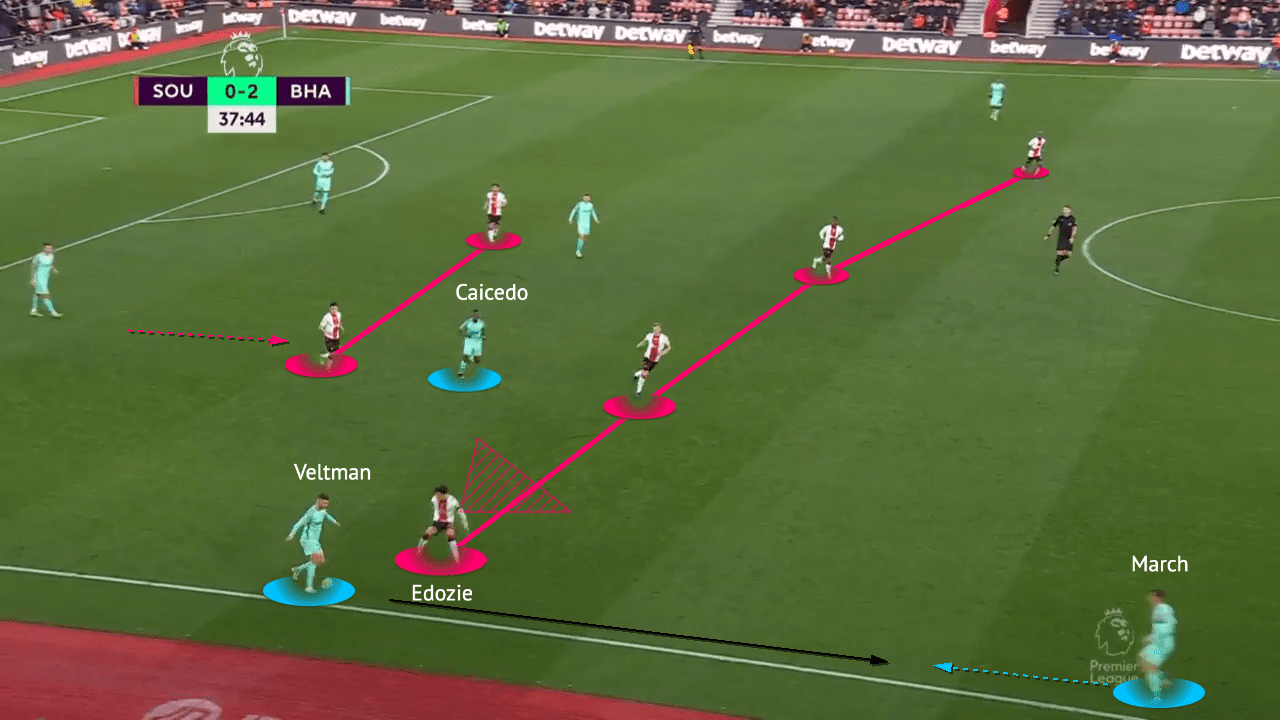
But after Veltman received it, he would find himself in trouble as Edozie could jump from the inside to block his diagonal angle to the centre (again). The Brighton right-back was a bit inconsistent in this game as he could lose his focus suddenly after the 2-0 lead. Then, Veltman only had the support of Solly March, who was not good at diagonally carrying infield, despite there being spaces, as Romain Perraud would be following tightly and put pressure on his back.
Southampton were more able to control the game after these small changes although far from being perfect. They generally pulled the Brighton wingers down as we saw Mitoma also moving deeper more and more, so De Zerbi’s side lost the natural threat behind to do harm to the opponents.
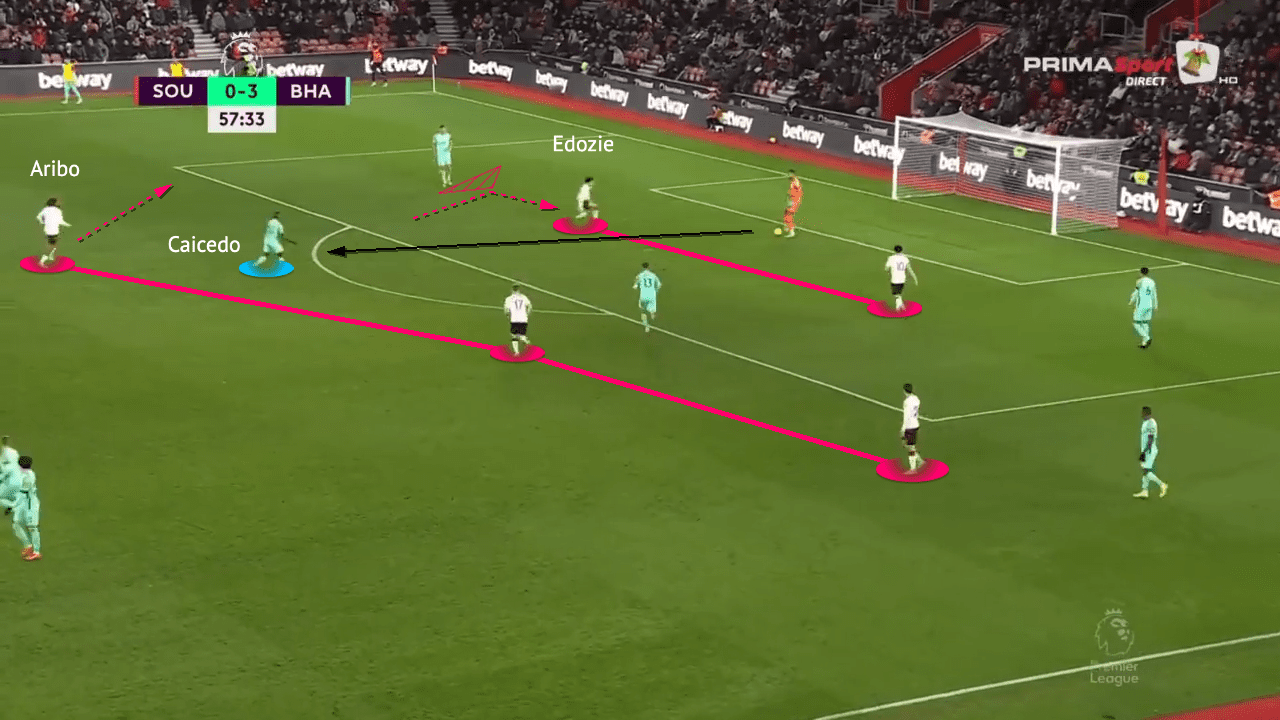
But during halftime, Jones made another change on the team’s pressing as he also instructed the team to curve the run from outside in the first line, and not only Elyounoussi, but also they could push with the left-winger to limit the playing angle of the opponents.
Here, it shows Edozie pushed from the outside and Caicedo was the only remaining short option of the goalkeeper, then, it was easier to defend as the Ecuador international was not good at turning after receiving vertical passes, so Joe Aribo could prepare to press the central defender, which eventually prevented that pass and they denied the ball progression for Brighton.
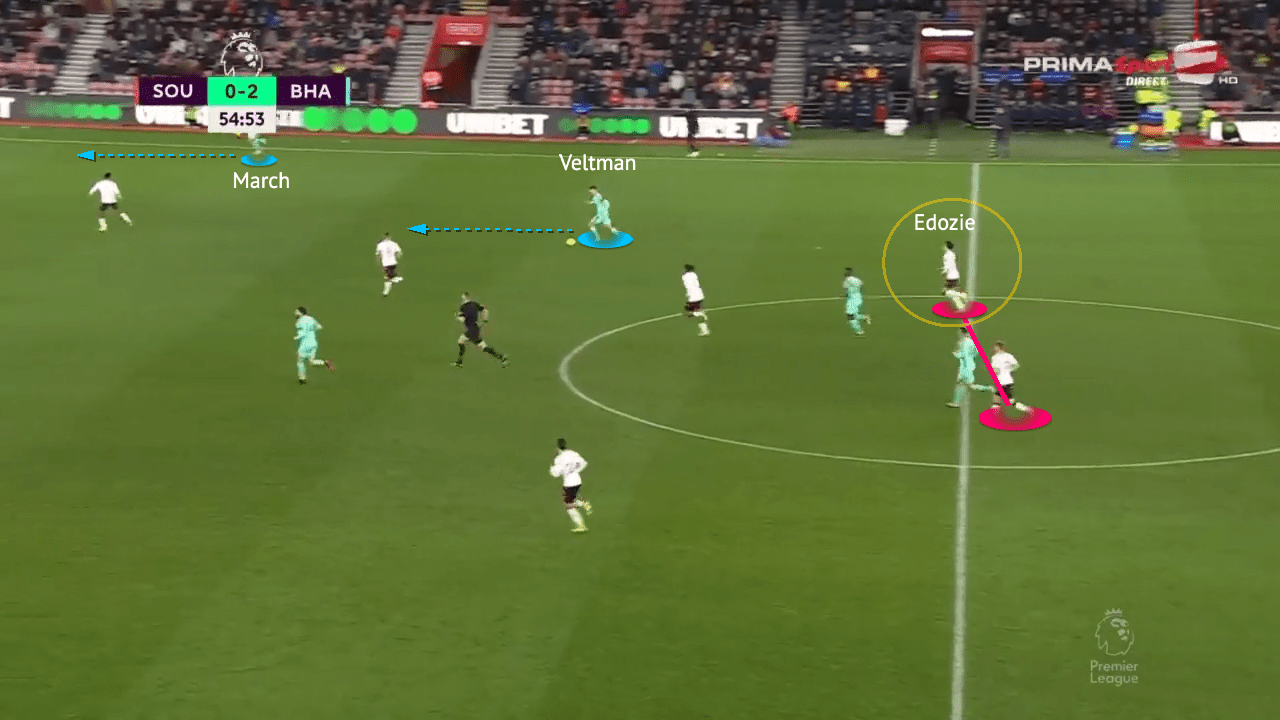
But a coin has two sides and we do not feel that the change at half-time was the best call because Brighton also exploited the wide spaces more behind Edozie with Veltman supporting the winger, creating 2v1 on Perraud and later Ainsley Maitland-Niles. They created two good chances with this and one of them resulted in the third goal which March scored a screamer.
Conclusions
Southampton looked better but not good enough even though some changes were made during the game. As this analysis has shown, Jones has so much to work on his team and they have to bounce back as soon as possible, given that Julen Lopetegui’s Wolves beat Everton, the Saints are now at the bottom of the table already.





Comments